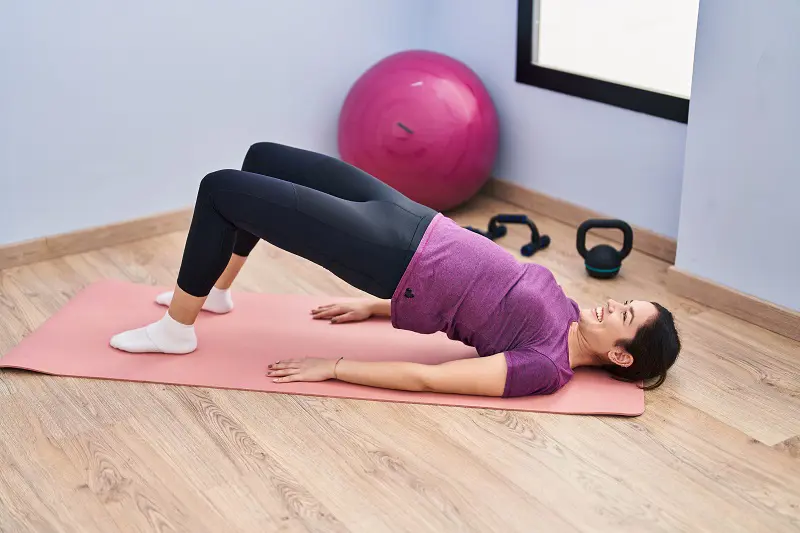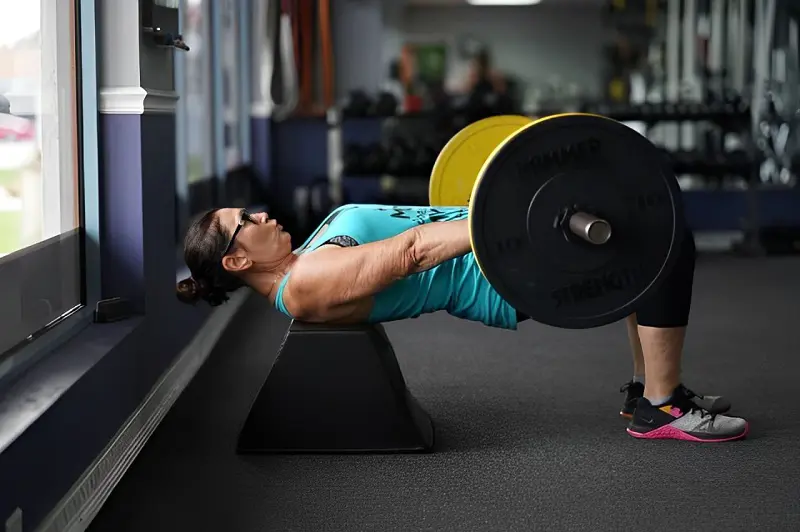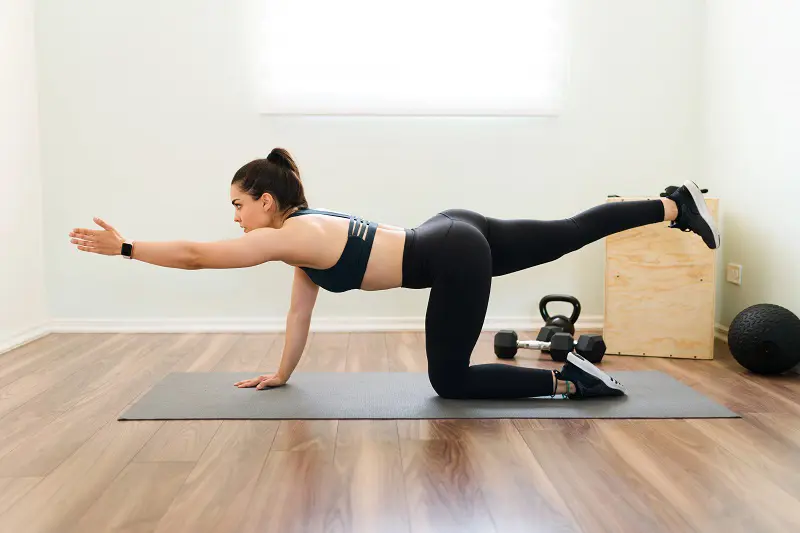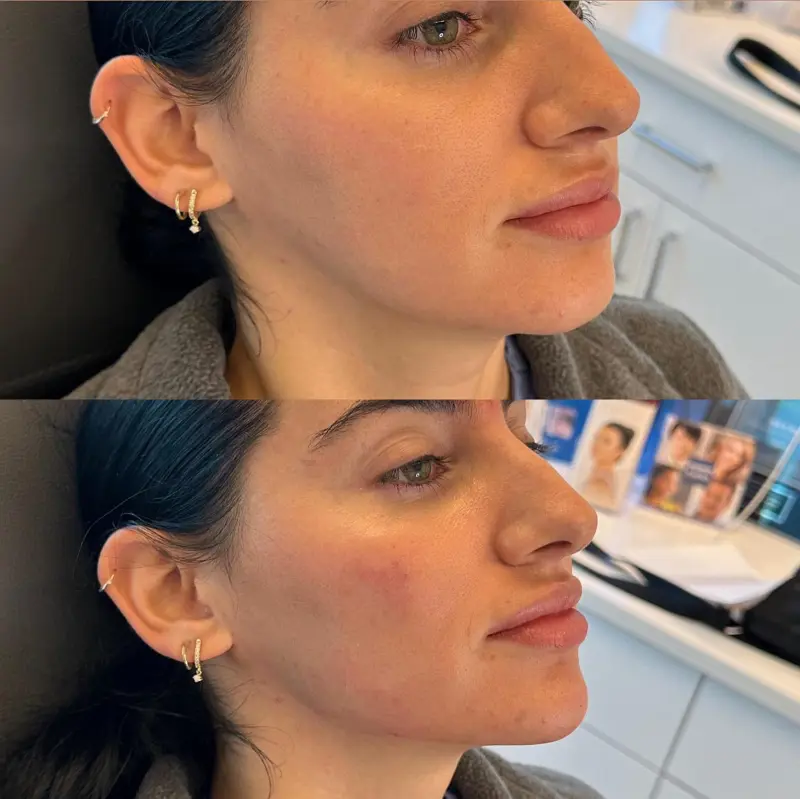How to Do Squats Correctly For Beginners? Benefits, Types And Muscles Worked

Despite being one of the most basic moves for your fitness regimen, Squats can be deceptively easy to screw up. This exercise works out your glutes, quads, hamstrings, and core.
Before starting your workout session, it is necessary to understand how to do a squat and maintain a proper form. In this guide, we will break down the steps, benefits, and various types of squats that you can do.
How To Do Squats: Step-By-Step Guide
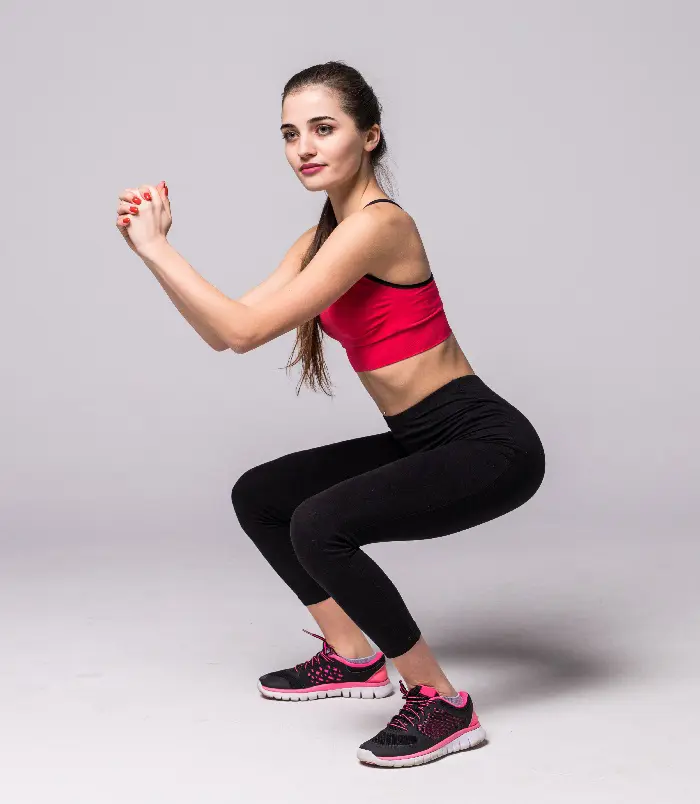
The classic squat exercise is an absolute staple that mainly targets almost all of the muscles in your lower body, from hamstrings to quads.
While the major goal of this workout is to prime you to lift heavy things safely, they also sneakily work out your core due to the balancing and stability work involved. You can easily perform squats at home without any workout equipment with just your trusty mat.
Here is the step-by-step guide on how to do this exercise properly:
Step 1: Stand With Your Feet Apart
- Stand straight with a good comfortable posture and have your feet about shoulder-width apart. Point your toes slightly outwards to prevent your knees from caving in while squatting.
Step 2: Engage Your Core Muscles
- Continue keeping your back straightened to keep a good posture and engage your core muscles to share and balance the stress load between your lower muscles and the core.
- To engage the core, take a deep breath at the start of the rep and hold it in while pushing out your midsection. Do not exhale until the rep is done.
- This can be skipped if you are not conducting weight training.
Step 3: Lower Your Body
- Slowly lower your body down by driving your hips back, bending the knees and ankles like sitting on a chair.
- Don't go lower than a 90-degree angle between your legs and thigh if your knees aren't strong enough yet. Getting yourself injured is not worth the risk.
Step 4: Keep A Good Posture
- Keep your back straight and your chest up throughout the entire movement for a perfect rep. Good posture on the legs doesn't excuse bad posture anywhere else.
- If you are finding it difficult to keep your back in a neutral position, you might have forgotten to engage the core. A good core engagement will make it easy to keep a good posture of your back.
Step 5: Lift Your Body To Starting Position
- Press and dig into your heels and engage your glutes to lift yourself back up to the starting position.
- To engage your glutes, squeeze them tightly as you lift yourself. Do not squeeze the glutes while going down to a sitting position.
What Muscles Do Squats Work?
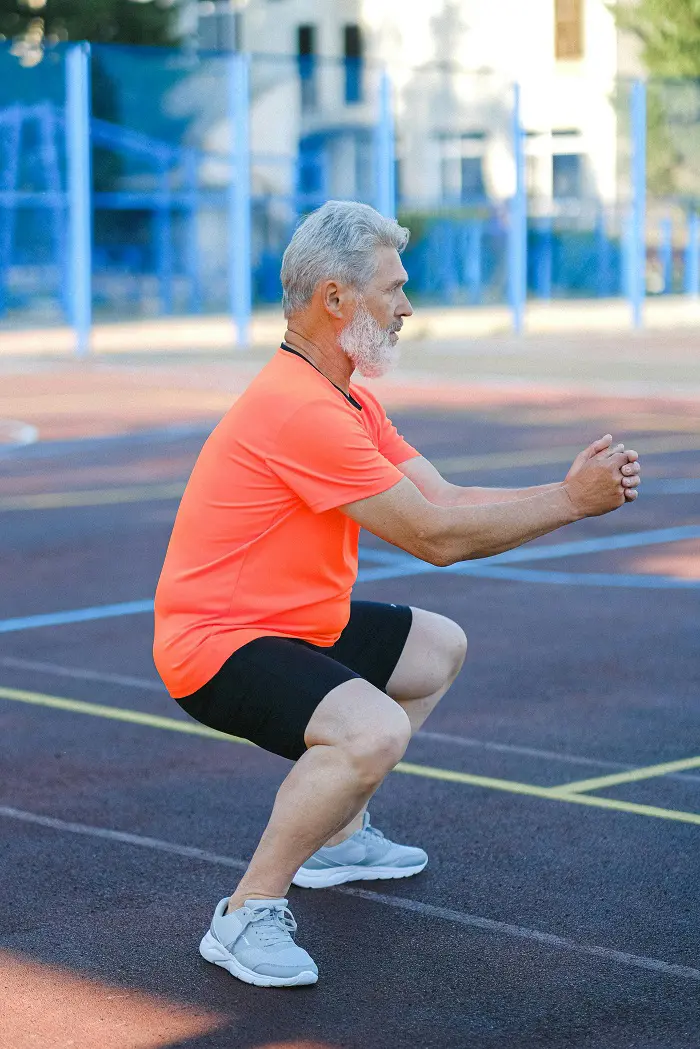
Since squats are amongst the basics, they require very little power and strength to pull off. Targeting multiple muscle groups in your body, they provide an effective fitness regimen at home for warming up and engaging several muscles from your lower legs to the core.
Here are some of the muscles that are targetted by squat exercises in your body:
1. Quadriceps
Quadriceps muscles are the leanest and the strongest of all muscle groups present in the human body. This muscle group consists of four different muscles at the front of the thigh. They are involved in doing major extension work of the knee such as extending and keeping the legs straight.
2. Hamstrings
Similar to the quadriceps group, the hamstrings are also a group of muscles that consist of three separate muscles at the back of the thigh. Hamstrings mainly affect hip and knee movement.
They begin from under the gluteus maximus behind the hipbone while the other end of it is attached to the tibia at the knee.
3. Glutes
These are found in the posterior region of the human body above the hamstrings. Strong gluteals are important as they create pelvic stability which helps with proper pelvic alignment, propulsion during walking and running, and balancing on one leg.
4. Calves
Calves consist of a group of muscles that are pivotal to the movement of the ankle, foot, and toes. They are found behind your leg just below the knee.
5. Adductors
Adductor muscles are hip abducting muscles located in the inner thigh and control the thigh bone's ability to move in-and-out and side-to-side. It originates from the pubis bone and connects along the femur.
It "adducts" and flexes the thigh at the hip. Likewise, it also contributes to linear and circular motions of the thigh while maintaining balance. The adductors are ribbon-like and consist of the adductor longus, adductor magnus, and adductor brevis.
6. Core
The core muscles are the group of muscles around the trunk and hips that surround the spine, abdomen, and hips. They are essential for balancing the load between the spine, pelvis, and the lower body properly.
Some of the core muscle groups are the back muscles, pelvic muscles, and oblique muscles which are further subdivided.
How Many Squats A Day?
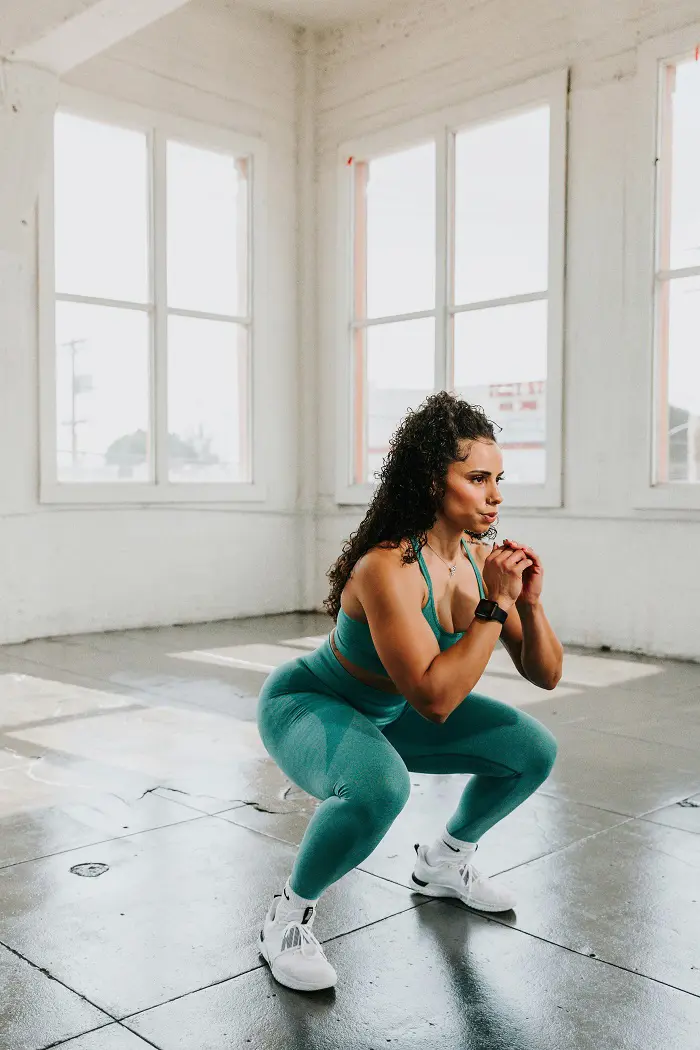
Now that we have covered how to do a squat, you may also wonder about "How many squats a day should I do?" However, there is no definitive answer to this question.
If you are new to squatting, consider doing 2-3 sets of 10-12 reps of squats about 1 to 2 times a week. This will give your muscles enough time to recover between leg workouts. You can eventually consider doing 3 sets of 20 reps at least 3 times a week.
Once your body gets used to squats and your leg muscles build up, you will need to increase the reps of your squats to 40 and 50 to see proper results.
When To Do Squats?
There is no universal scientific answer for the best time to do squats since they're not a complete workout by themselves. You can do them in the morning or the evening hours.
While the morning time works great because it boosts your energy and helps kickstart your day, trying to squeeze in a set of squats right before bed can mess up your sleep by producing endorphins (happy hormones). This hormone can interfere with the release of melatonin (sleep hormone).
Likewise, if you are pressed for time, you can mix up your squat reps too. Consider doing a set of 10-25 squats in the morning, and another set of squats in the evening. If you feel like it, add another set in the afternoon too.
Squat Variations
Although the classical variation of squat is the perfect introductory exercise for beginners in the fitness world, it can become less effective as their leg muscles become stronger. It can eventually become monotonous for some people who seek additional challenges.
To address this issue, many variations of this workout have been formed today. Each variant brings a specific flavor to your workout session and targets different muscle groups.
Here are some of the most well-known variations of squats:
1. Back Squat
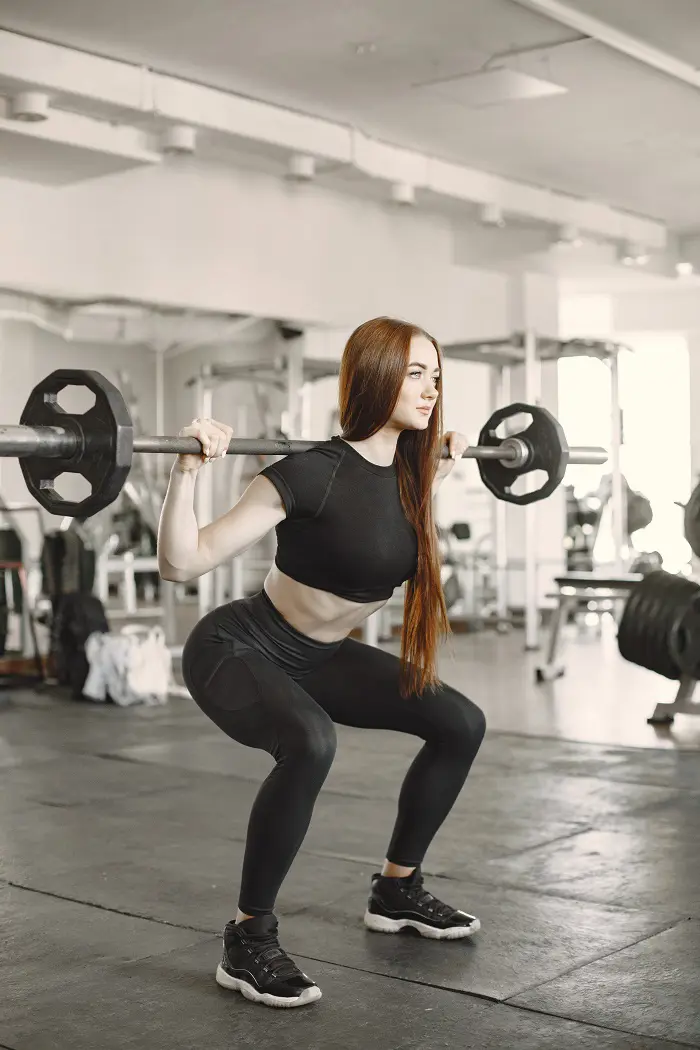
Back squats take the traditional squatting motion and add weight resistance to your shoulders with a barbell. They can be challenging to do for beginners. So if it’s your first time, consider asking for a trainer’s guidance for good form.
Make sure the weight rests on the muscles on the sides of your neck where it's easier to balance a heavy load. Back squats emphasize the glutes and hips while still lightly targeting the quads.
2. Goblet Squat
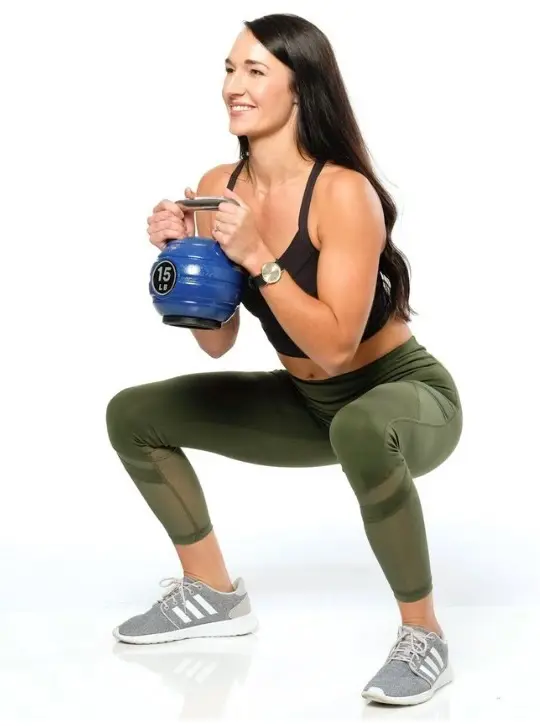
If you feel that back squats are quite challenging, you can consider doing an easier variant of squat known as goblet squat. Basically while squatting, hold a kettlebell, dumbbell, or medicine ball near the center of your chest.
Once you get used to a goblet squat, consider dropping the elbows between the legs and inside knees for an additional full range of motion for exercising the arms.
3. Front Squat with Weights
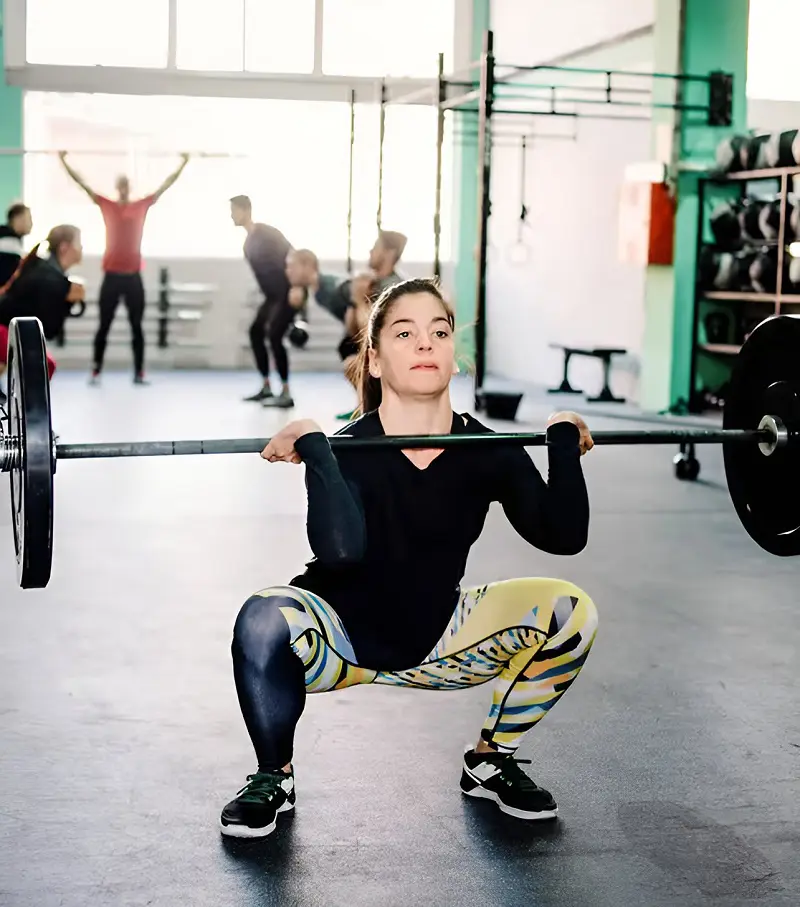
Front squats can look similar to back squats but they have a huge difference. While front squats allow you to add weight quicker and promote strength and power for your glutes, front squats also improve your quads.
So, if you are aiming for good aesthetics and a thinner thigh, consider prioritizing front squats to build up the quads. Make sure to place the barbell on the collarbones which provides a solid foundation to prevent unnecessary strain on your back.
4. Dumbbell Overhead Squat
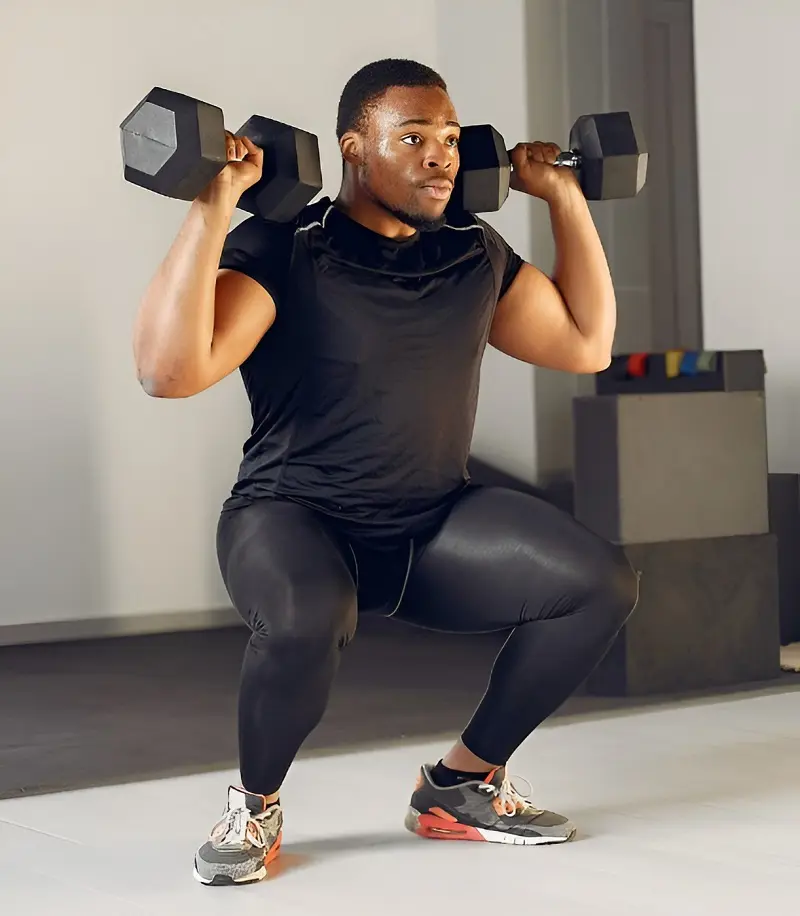
An overhead squat is a simpler version of a goblet squat where the dumbbell or a medicine ball is placed over your head instead of your chest.
Your range of motion will be slightly different than goblet squat due to this factor, therefore pay careful attention to your form and take care not to overstress your muscle groups or lose your balance.
5. Jump Squat

If you don't have access to or have no desire for weights, jump squats are perfect for you as they won't require any weight-lifting equipment. Jump squats are a plyometric move, meaning it’s a powerful aerobic exercise that exerts your muscles to their maximum potential in a short time.
Whenever you want to try this variation, it's important to note that you don't suffer from any joint issues in your knees, hips, and ankles. Otherwise, it could make your situation worse.
6. Weighted Sumo Squat
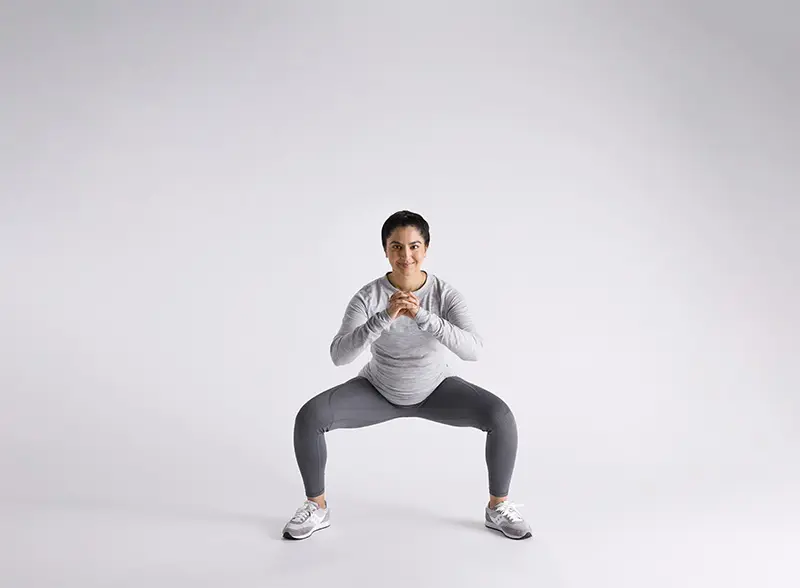
This squat variation in this list, the sumo squat forces you to change your posture by widening your stance with your feet turned out. This creates a new challenge for your muscles as your foot position changes your support base.
Thus, sumo squats are the best exercise for toning down and strengthening your inner thighs.
Benefits Of Squats
Doing squats benefits your body even if it isn't immediately obvious. Consistent squat workouts will help you see positive results in the long term. Here are some of the benefits:
1. More Muscle Mass
Squats are a dynamic exercise which means it’s a move that pushes muscles through a specific range of motion while using many muscles at once. This is different from targeting one muscle through a static exercise.
It also helps put the body in an anabolic state. Reaching this post-workout state helps build muscle mass and makes you stronger.
2. Promote Weight Loss
When you perform the needed reps and sets daily, you're burning calories with this exercise. This is key for staying on top of your weight game. Although it's not a full-on fat burner, it still contributes to your overall calorie burn.
3. Improves Athletic Performance
Squatting improves neuromuscular efficiency. This means that it improves the body’s way of telling the nervous system which muscles to use.
Since squats target more amount of muscle groups, you are improving neuromuscular efficiency for a wide range of muscles instead of just a specific group.
4. Reduce the Risk of Injury
Since squatting helps to improve the glutes and the lower body muscles, squatting will make you stronger. They'll protect your joints and muscles from being pulled due to overuse.
5. Boosts Bone Density
Incorporating squats into a strength training routine can improve the skeletal health of women in menopause. Likewise, it may also help osteoporosis patients who are notable for having a weak bone density.
Thus, performing squats consistently will lead to improved bone mineral density in both young adult men and women which can prevent bone and age-related chronic illnesses once they reach their 50s.
Common Mistakes To Avoid
- Not warming up: Skipping a warmup means your joints and muscles haven't gotten the time needed to loosen up your muscles. If you jump straight to workout sessions, you only increase the chances of injury.
- Knees drifting inwards: Knees caving inwards can seem innocent while doing squats, but this habit is extremely dangerous and puts you at increased risk for potential muscle injuries for no gain.
- Leaning too far forward with your body: It might feel tempting to lean forward to keep your balance while carrying weights, but this will put strains in all the wrong places of your body and lead to injury.
- Descending too quickly: Especially when dealing with heavy-weight strength training, moving too quickly can cause slipped spinal discs and muscle tears.
- Bending your back: Curving your back and doing squats while the spinal column is in a non-neutral position increases spinal compression. This could lead to a muscular or spinal disc injury.
- Overdoing the Reps: This is true for all exercises. If you are a beginner, you need to perform fewer reps and sets of squats. Try to focus on the form rather than quantity when starting out.
Recent posts
How To
How To
How To Get Rid Of Neck Hump With Exercises At Home
A neck hump is a curved appearance in the back of our neck that may lead to an unflattering look and discomfort. Also known as Dowager’s Hump or Kyphosis, this condition is often caused by poor posture, aging, or weight gain. Fixing it could ta...
How To
A Guide On How To Do Dumbbell Pullover Exercise Properly
A dumbbell pullover is a well-known strengthening exercise loved by bodybuilders for working the chest and back. It also builds your lats and triceps, making them an ideal addition to your strength workout routine. When you are in your first attempt,...
How To
How To Do Clamshell Exercise Properly For Strong Lower Body
Strengthen your glutes, core, and legs with the clamshell workout. Practicing it consistently can offer lots of benefits, from reducing back pain to improving balance. While it might seem confusing for a newcomer, this exercise is quite simple - lie ...
How To
How To Do Glute Bridge Exercise Correctly For Beginners
Glute bridge is a fantastic exercise that targets the glutes, core, and hamstrings. People practice it to strengthen their glutes, improve core stability, and even reduce back pain. To truly reap these benefits, though, we have to perform it correctl...
How To
How To Do Hip Thrusts: Methods, Benefits And Types
The hip thrust is a great bodyweight move for building strong glutes and a solid core. Also called the hip thruster, it’s great for improving posture and easing lower back pain. To get the most out of it, nailing the form is key. Everything fro...
How To
How To Do Bird Dog Exercise? Techniques, Types And Benefits
If we want to enhance core strength and spinal stability, Bird Dog is a fantastic bodyweight exercise to include in any workout routine. It activates various muscle groups like abdominals, glutes, and erector spinae. The movement itself isn’t t...



